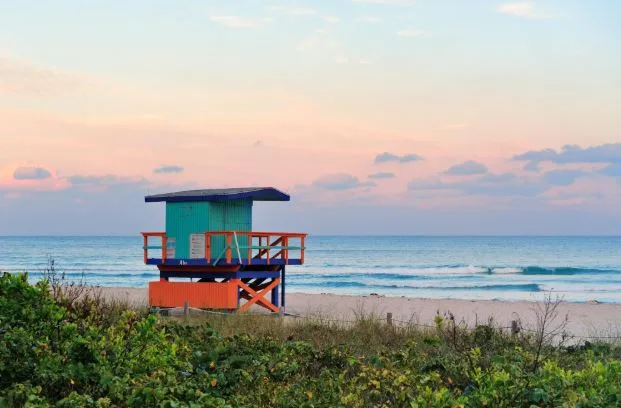The Carolinas’ Most Dangerous Beaches Revealed: 25 Years of Fatal Data Expose Hidden Dangers
For many Americans, the beaches of North and South Carolina are synonymous with summer escapes — oceanfront rentals, family barbecues, and surf breaks that draw millions each year. But beneath their postcard beauty lies a stark truth few realize until it’s too late.
A new 25-year study by Auger & Auger Accident and Injury Lawyers has found that more than 600 people have lost their lives on Carolina beaches since 2000. The report ranks the region’s most dangerous coastal destinations based on verified data across three fatality types — drownings, shark attacks, and DUI-related deaths — and highlights the outsized risk to tourists.
A Deadly Pattern Along the Coast
According to the study, the beaches drawing the biggest crowds are often those recording the highest number of fatalities. Over half of all drowning victims were tourists, many of whom were unfamiliar with the area’s unpredictable surf and rip currents.
Myrtle Beach, South Carolina, topped the list overall with 230 total fatalities between 2000 and 2024. The resort town saw 135 drownings, 20 shark incidents, and 75 DUI deaths in surrounding beach counties. Despite hosting nearly 19 million visitors annually, lifeguard staffing remains seasonal, and flag-warning systems vary widely by location.
Following closely was the Outer Banks, North Carolina, which recorded 152 total deaths, including 28 shark attacks— the highest in the region. Dangerous currents and stretches of coastline without lifeguard patrols contribute to one of the deadliest fatality-to-visitor ratios in the Carolinas.
Folly Beach, South Carolina, reported 93 fatalities, but with only 1.2 million annual visitors, it recorded the highest fatality rate per tourist — a staggering 77.5 deaths per million visitors. Both drownings and DUI-related crashes spike around major holiday weekends.
Wrightsville Beach, North Carolina, saw 46 total fatalities, with more than 25 drownings, giving it one of the state’s highest death densities relative to tourist volume.
Hilton Head Island, South Carolina, also appeared in the top five with 70 recorded deaths, over half involving visitors from outside the state.
| Rank | Beach Location | Drownings | Shark Attacks | DUI Fatalities | Total Fatalities | Annual Visitors | Fatalities per 1M Visitors |
| 1 | Myrtle Beach, SC | 135 | 20 | 75 | 230 | 19,000,000 | 12.1 |
| 2 | Outer Banks, NC | 90 | 28 | 34 | 152 | 3,500,000 | 43.4 |
| 3 | Folly Beach, SC | 45 | 8 | 40 | 93 | 1,200,000 | 77.5 |
| 4 | Wrightsville Beach, NC | 25+ | 3 | 18 | 46 | 800,000 | 57.5 |
| 5 | Hilton Head, SC | 30 | 5 | 35 | 70 | 2,500,000 | 28.0 |
Why Tourists Face the Highest Risk
The study found that 51% of drowning victims were visitors, often unfamiliar with rip currents, undertows, and local flag systems. At the same time, DUI fatalities along beach-adjacent highways and causeways surged during peak tourism months — with some weekends in South Carolina recording more drunk-driving deaths than drownings.
Safety experts warn that limited patrol hours, inconsistent warning signage, and the absence of full-season lifeguards contribute to preventable loss of life. The findings, they argue, should serve as a wake-up call for local tourism boards and state safety agencies.
“Tourism is vital to the Carolinas’ economy, but visitors can’t stay safe if they don’t know the risks,” said a spokesperson for Auger & Auger. “Even simple measures — improved signage, consistent beach-flag systems, and stronger road enforcement — could save lives.”
Understanding the Data
The research team analyzed 25 years of fatality data from multiple verified sources, including:
- NOAA and the U.S. Lifesaving Association for drowning records.
- The International Shark Attack File (ISAF) for shark incident data.
- NHTSA and state crash databases for DUI fatalities.
- State tourism boards and convention bureaus for annual visitor estimates.
Each beach’s ranking was determined using a weighted “Danger Index”: drownings (40%), shark attacks (30%), and DUI deaths (30%).
A Public Safety Concern
The study emphasizes that these fatalities are not isolated events but part of a consistent and preventable pattern. Coastal safety programs in both states remain underfunded, and few counties maintain full-time patrol coverage during off-season months.
With thousands of tourists planning fall and winter trips to the Carolinas’ beaches, the report underscores the urgent need for uniform safety standards and greater public awareness.
For the complete study findings and data sources, visit Auger & Auger Accident and Injury Lawyers.



